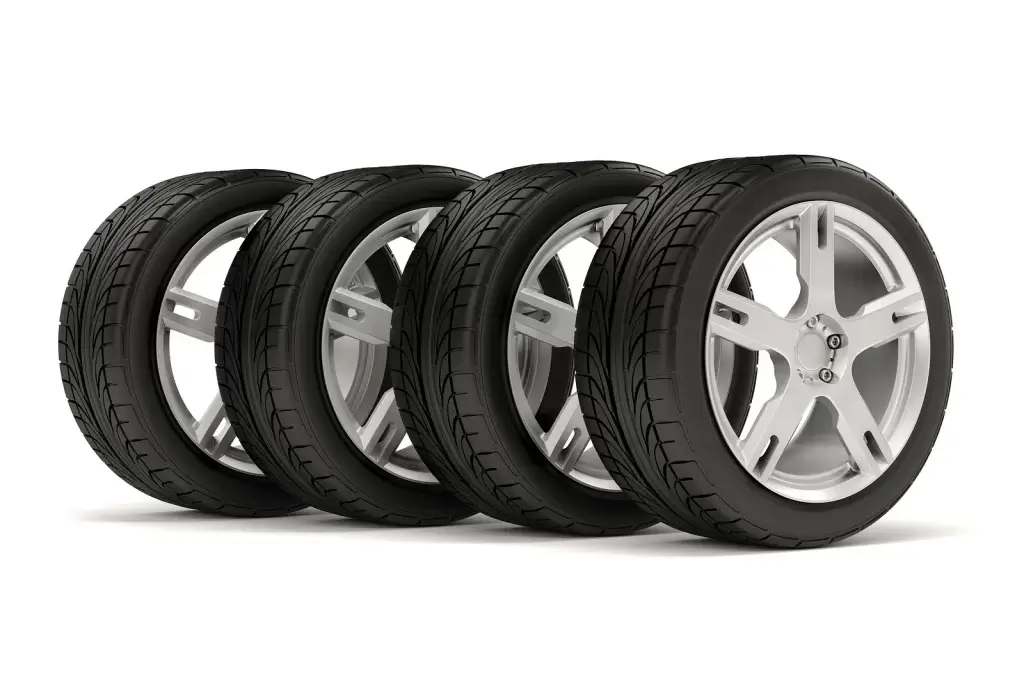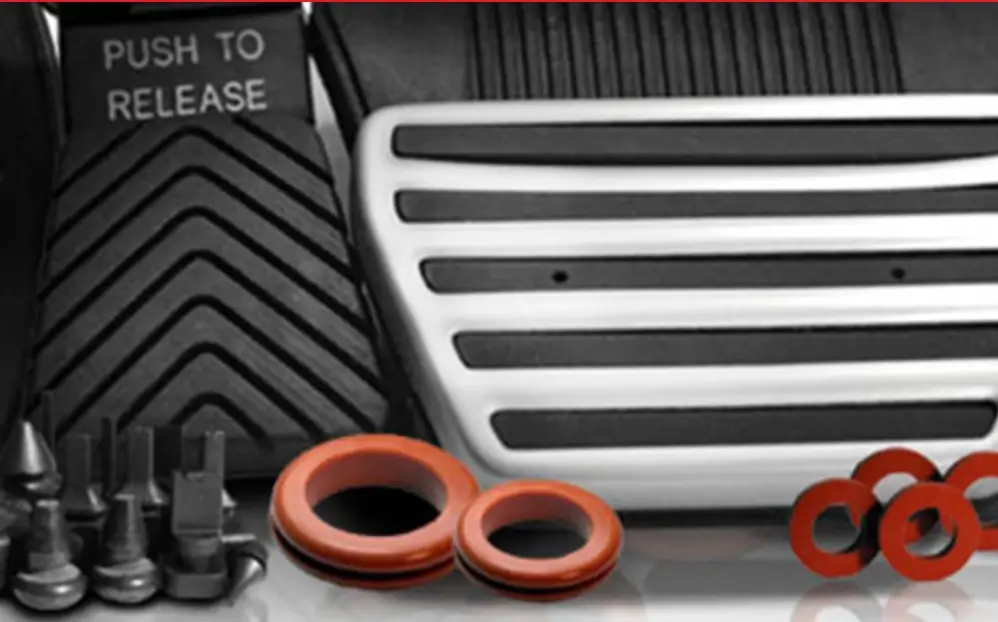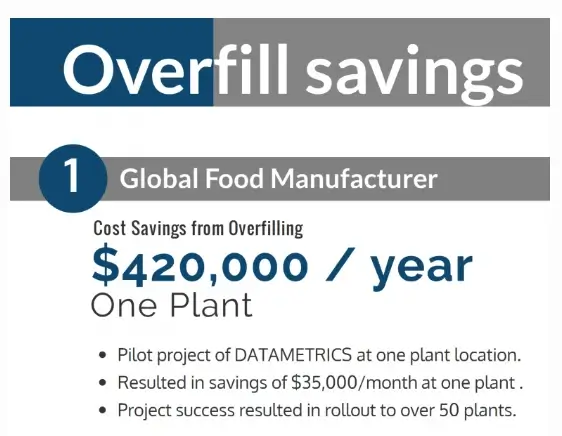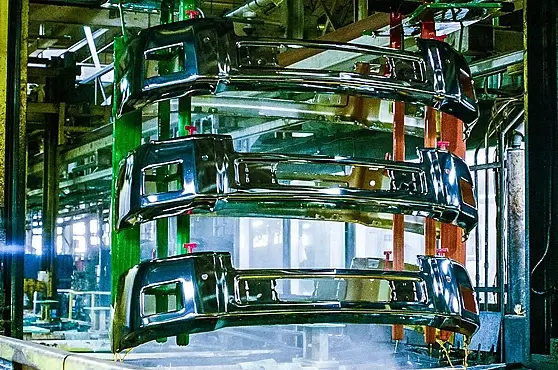
With a business model built on listening to customers, anticipating their needs and working closely with them to create new and innovative products, this top food processing company is also the number one food service supplier in the United States. Customers who rely on its pre‐packaged salad ingredients include several of the top fast food and restaurant chains.
“Process control, not product control” is the company’s mantra, and it has used Datamyte software for net weight control and measurement of seal integrity for over eight years.

“We perform quality management by process control, at each step in the process, using Datamyte software and data collectors,” says the company’s Director. “This is far more efficient than managing quality by product control which focuses only on testing and controlling product at the end of the operation.
“When you have the steps of any given process under control using SPC, you don’t have to invest as much time and effort on checking the finished product because you know the process that produces it is in control,” he added. “This gives you greater confidence in your quality and frees you up to pursue other objectives.”
The company implemented a new net weight control program in order to reduce giveaway while still meeting customer requirements. Vibratory feeders are used to level out the amounts of ingredients fed into filling machines and then into containers. Net weight or fill target is achieved within a certain tolerance, based on standard deviation. The software has to be robust enough to capture multiple measurements and has to be flexible enough to adapt tolerances dynamically to accommodate different bag sizes.
CRGI had used Excel spreadsheets for advanced product quality planning (APQP) and production part approval process (PPAP). Using spreadsheets worked O.K. because they were flexible and easy to modify, but they had limitations and serious downsides.
“In the automotive business, using a spreadsheet for quality planning made it very difficult to control revisions, and control links between flow charts, FMEA and control plans,” says Quality Control Manager Mr. Cegielkowski. “Everything was controlled manually. The quality control process was time consuming and prone to small mistakes.”
When Cegielkowski was offered the quality manager position, he knew that if he wanted to move the company into the future, he needed to improve processes and find a better, software-based system for APQP and PPAP.


Get the most return out of your current investments. DataMetrics connects to more devices and systems than any other SPC program, including check-weighers, Solartron digital gauges, and GaugeWay wireless systems, as well as more than 70 device drivers. This means you can use your existing gauging and related software programs and minimize your investment in new equipment, software and training.
Today’s food and beverage manufacturers are challenged to achieve tight net content control. Underfill your product weight, volume or count, and you violate such regulations as the Fair Packaging and Labeling Act (FPLA). StarKist Co., makers of StarKist®-brand shelf-stable seafood products, was sued for under-filling some of its five-ounce canned tuna products by as little as 0.03 ounces, which was in violation of state and federal law. However, if you overfill to avoid noncompliance and lawsuits, you not only waste raw materials, but also lose thousands — if not millions — of dollars in profit.
Yet, a wide range of issues can interfere with achieving tight net content control. These issues can stem from normal wear and tear of your production machinery to fluctuations in the raw materials used to make your products and beyond. As a quality control manager, how do you find a balance between under-filling and overfilling to drive profitability while managing compliance? How do you simultaneously optimize your food and beverage manufacturing processes to help ensure product safety, quality and satisfaction among consumers — all while upholding your company’s valuable reputation?
Quality Digest has been illuminating the path for quality professionals for more than 40 years. A weekly video podcast hosted by Quality Digest Live, demonstrated the Wireless LightStar™ Torque Wrench and 600 WiFi Data Collector from Datamyte.
This torque management solution raises the quality bar with SMARTWRENCH™ technology for precision auditing, including a patented angle restart algorithm eliminating false readings, verification of correct Nm wrench, and calibration tracking. The solution eliminates the downtime associated with reacting to false out-of-spec readings and costs associated with failed critical fasteners.

Being a Tier 1 leader in bumper/structural modules for the North American auto industry requires access to up-to-the-minute information provided by the company’s stand alone database – no matter where employees are located when they need information. Also, the quality data management software the company used didn’t have all the new functions that employees needed.
“The biggest challenge we faced was the ability to connect to our database, both onsite and offsite,” says IT Manager Mary Banaszewski. “In addition, our previous quality data management software didn’t provide the compliance we needed to conduct critical quality audits.”

Aavid began using DataMetrics in 2014, and employees appreciated the robust system. However after two years, the program was placed on hold due to a lack of engineering resources. During this period, Aavid had no way to collect data during production for statistical process control (SPC) purposes. Process control issues were only identified when non-conforming material was discovered at final inspection which proved to be very costly.
“Discovering issues so late in the process made it difficult to make changes before a lot of scrap parts were already in the pipeline,” says Continuous Improvement Engineer Nick Chase. “This resulted in an unacceptable level of scrap and rework.”


